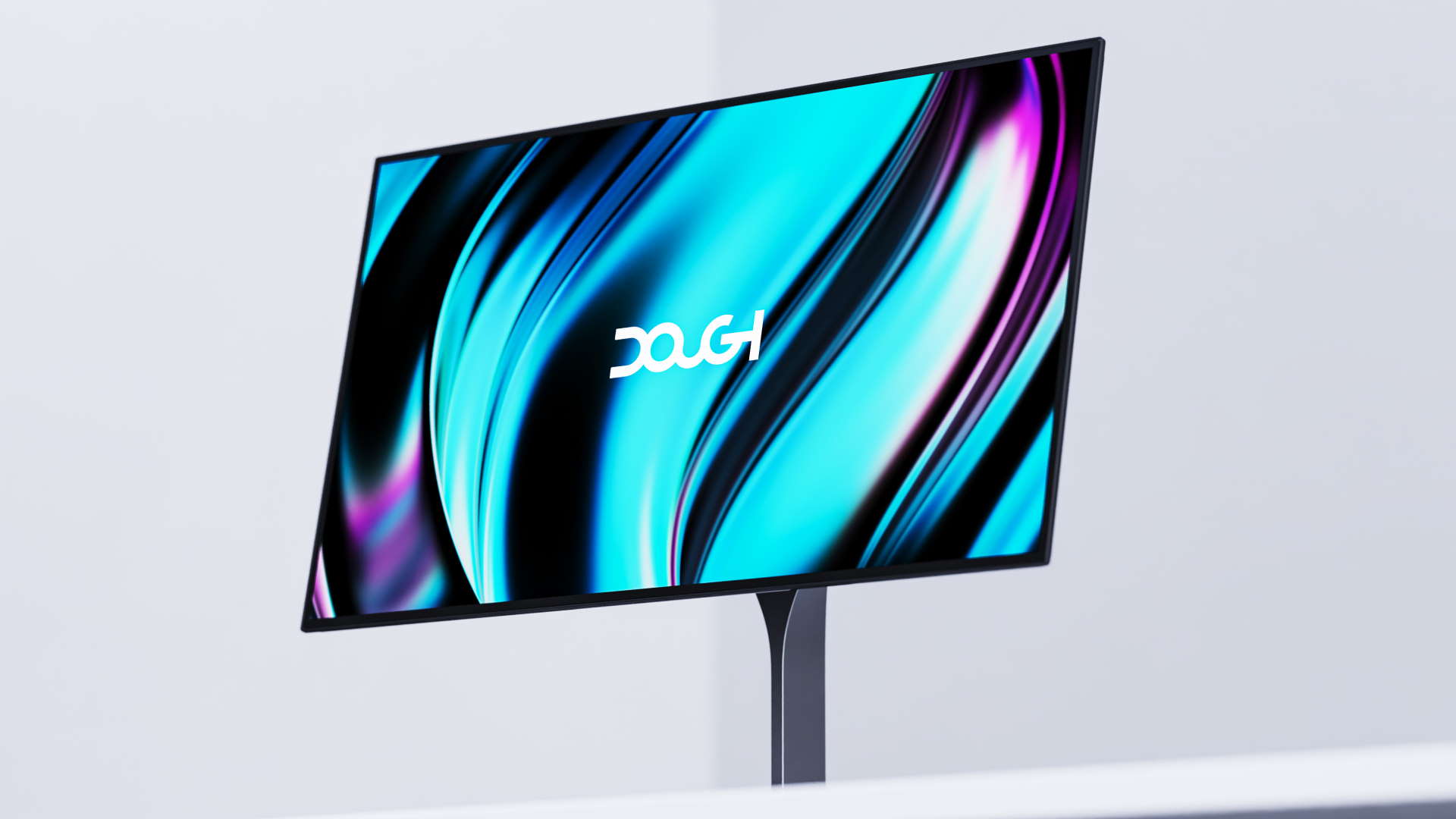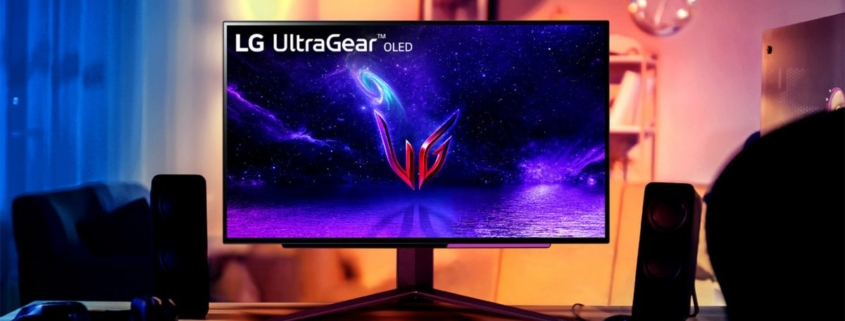Here’s why first-gen OLED gaming monitors aren’t truly PC optimized

It’s been an awfully long time coming, but OLED technology has finally arrived on the PC. But there’s a catch. None of the first round of OLED PC gaming monitors, including Alienware’s 34-inch monitor (opens in new tab), the LG UltraGear 27GR95QE-B (opens in new tab), and the most recent entrant in the Dough Spectrum ES07E2D (opens in new tab) use truly PC-specific panels.
That’s why we’ve yet to see, for instance, a 32-inch 4K OLED gaming monitor. Instead, the monitors we’ve seen are all closely related to OLED TV panels. Yup, even those 27-inch 1440p panels.
What could be more PC than a 27-inch 1440p monitor? Actually, the spec of a 27-inch 1440p panel is essentially the same as a 42-inch 4K screen when it comes to pixel density.
On the other hand, a 4K 32-inch panel has much higher pixel density. As Dough’s product manager, Rob Windhouwer, told us earlier this week (opens in new tab), that’s a whole different ballgame when it comes to panel tech. “At the moment, lack of brightness and pixel size issues prevent such displays from being available,” Windhouwer. “But we expect them to become reality around the second half of 2024.”
Broadly speaking, the higher the pixel density, the lower the pixel aperture ratio (the measure of how much of the pixel structure emits light) and in turn the lower the brightness.
What’s more, higher pixel densities also tend to consume more power and generate more heat. The problem with excess heat, of course, is increased risk of the age old OLED bugbear, burn-in.
It’s that excess heat build up that limits full-screen brightness on many current OLED TVs. OLED technology can typically hit quite high brightness for a small window or object, but is much more limited for large areas or for full-screen lighting.
Typically, OLED TVs use ABL, or automatic brightness limiter algorithms to manage brightness depending on the proportion of the panel being driven to higher levels. Heatsinks are also increasingly being used to allow OLED brightness levels to be cranked up.

Anyway, the net result for now is that OLED tech tends to be great at showing a small, bright object on a dark background, where peak brightness levels can hit 1,000 nits or more. Think star fields, a neon sign in a moody bar scene or a flaming torch being carried through a dungeon. However, when rendering an outdoor scene drenched in blazing sunshine, that peak brightness can dip below 200 nits.
For now, then, it’s cheaper and easier to stick to 1440p at 27 inches and other shapes and sizes with pixel densities that allow monitors to be derived from TV OLED panel tech.

Creating higher density displays that are more common on the PC like 27-inch and 32-inch 4K monitors, will require bespoke panels that can drive higher peak luminance levels despite the tighter pixel pitches.
Of course, high density OLED panels are commonplace in smartphones and becoming more widely available in laptops and tablets. So, the technology exists. However, managing the heat and power consumption in a six-inch phone panel or 15-inch laptop screen is not the same as a larger 32-inch desktop display.
For that reason, pretty much every OLED gaming monitor next year is likely to be TV-derived rather than truly PC-specific. So, expect to see more 27-inch 1440p panels 34-inch 1440p ultrawide options. It won’t be until at least 2024 that we see higher density OLED gaming monitors, such as 32-inch 4K panels. And because they won’t be derived from TV tech that’s produced in huge numbers, it’s also likely that such displays will be extremely pricey, more’s the pity.
Source link




